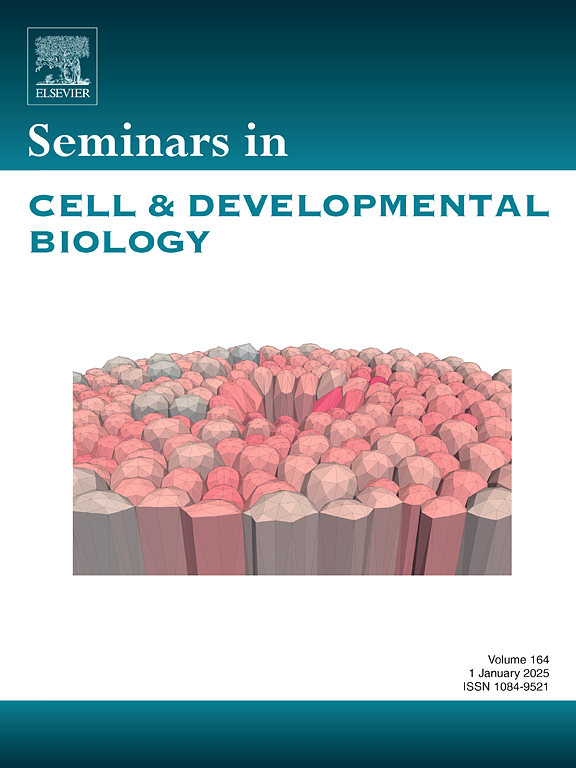果蝇卵背后的机制
IF 6
2区 生物学
Q1 CELL BIOLOGY
引用次数: 0
摘要
果蝇卵的形成和发育涉及生殖细胞、体细胞和周围基膜之间的多次机械交互作用。在这篇综述中,我们讨论了几个发展阶段,当来源,以及作用,机械力在鸡蛋形状的建立是明确的。这里描述的例子说明了这些力量的多样性,以及用于测量它们的工具和它们各自产生的结果的多样性。我们研究了它们对形态发生的贡献和整合。我们讨论了我们现有知识的局限性,开发新方法的重要性以及建模可以解决一些问题的支持。未来的一个主要挑战是了解当贡献者在不同的细胞类型和不同的时间活动时,如何实现塑造卵子的稳健性。因此,研究果蝇卵的形成在发育生物学中仍然是一个令人兴奋的模型,因为除了过去发现的生化信号外,它还必须整合来自环境的各种生物力学输入。本文章由计算机程序翻译,如有差异,请以英文原文为准。
The mechanics behind the Drosophila egg
The formation and the development of the Drosophila egg involves multiple mechanical cross-talks between germline cells, somatic cells and the surrounding basement membrane. In this review, we discuss several development stages when the sources, as well as the roles, of mechanical forces in egg shape establishment are well defined. The examples described here illustrate the diversity of these forces as well as of the tools used to measure them and of the outcome each of them generates. We examine their contributions and their integration to morphogenesis. We discuss the limitations of our current knowledge, the importance of developing novel approaches and the support that modelling could bring to tackle some issues. One major future challenge is to understand how robustness in shaping the egg is achieved when the contributors act in different cell types and at different times. Studying Drosophila egg formation thus remains an exciting model in developmental biology as it must integrate a variety of biomechanical inputs from its environment, in addition of the biochemical signals discovered in the past.
求助全文
通过发布文献求助,成功后即可免费获取论文全文。
去求助
来源期刊
CiteScore
15.10
自引率
1.40%
发文量
310
审稿时长
9.1 weeks
期刊介绍:
Seminars in Cell and Developmental Biology is a review journal dedicated to keeping scientists informed of developments in the field of molecular cell and developmental biology, on a topic by topic basis. Each issue is thematic in approach, devoted to an important topic of interest to cell and developmental biologists, focusing on the latest advances and their specific implications.
The aim of each issue is to provide a coordinated, readable, and lively review of a selected area, published rapidly to ensure currency.

 求助内容:
求助内容: 应助结果提醒方式:
应助结果提醒方式:


